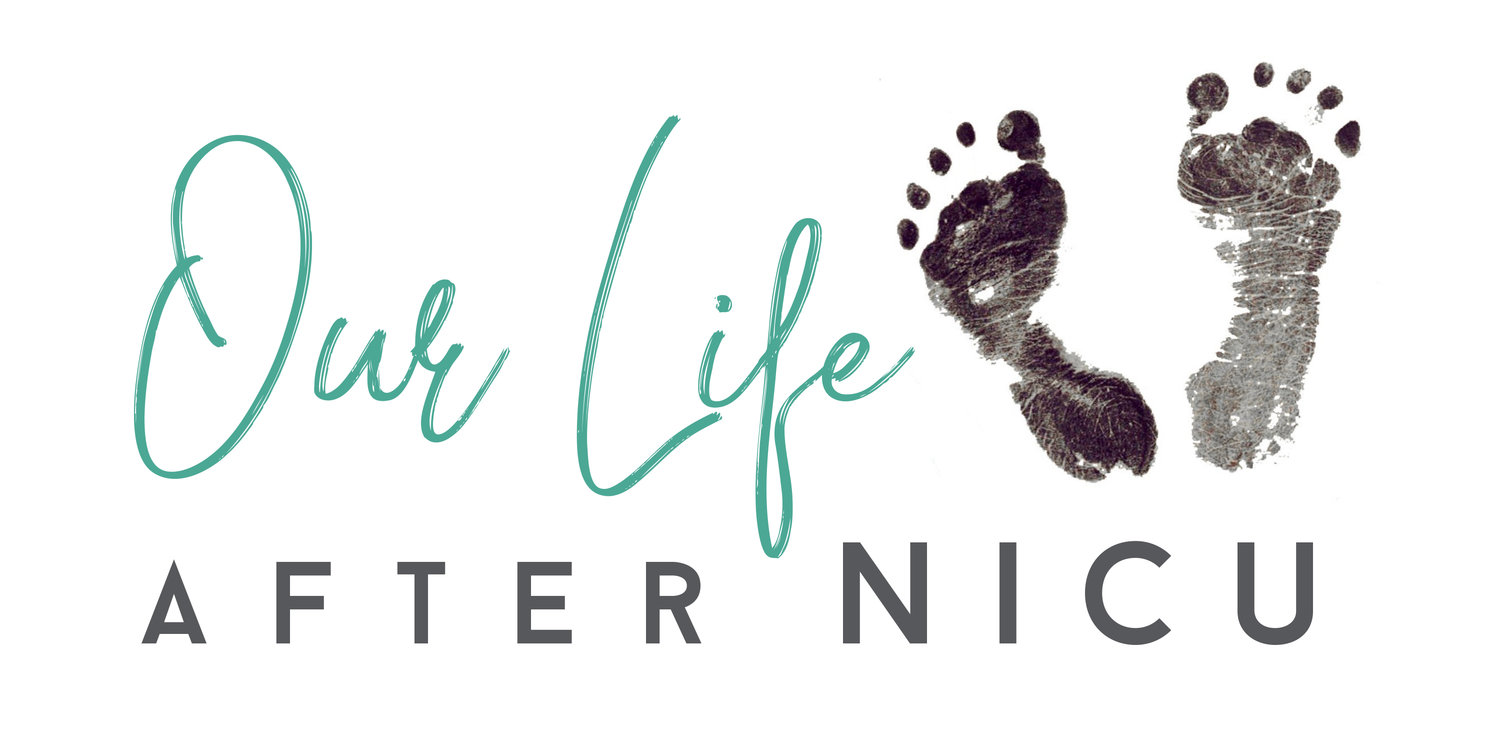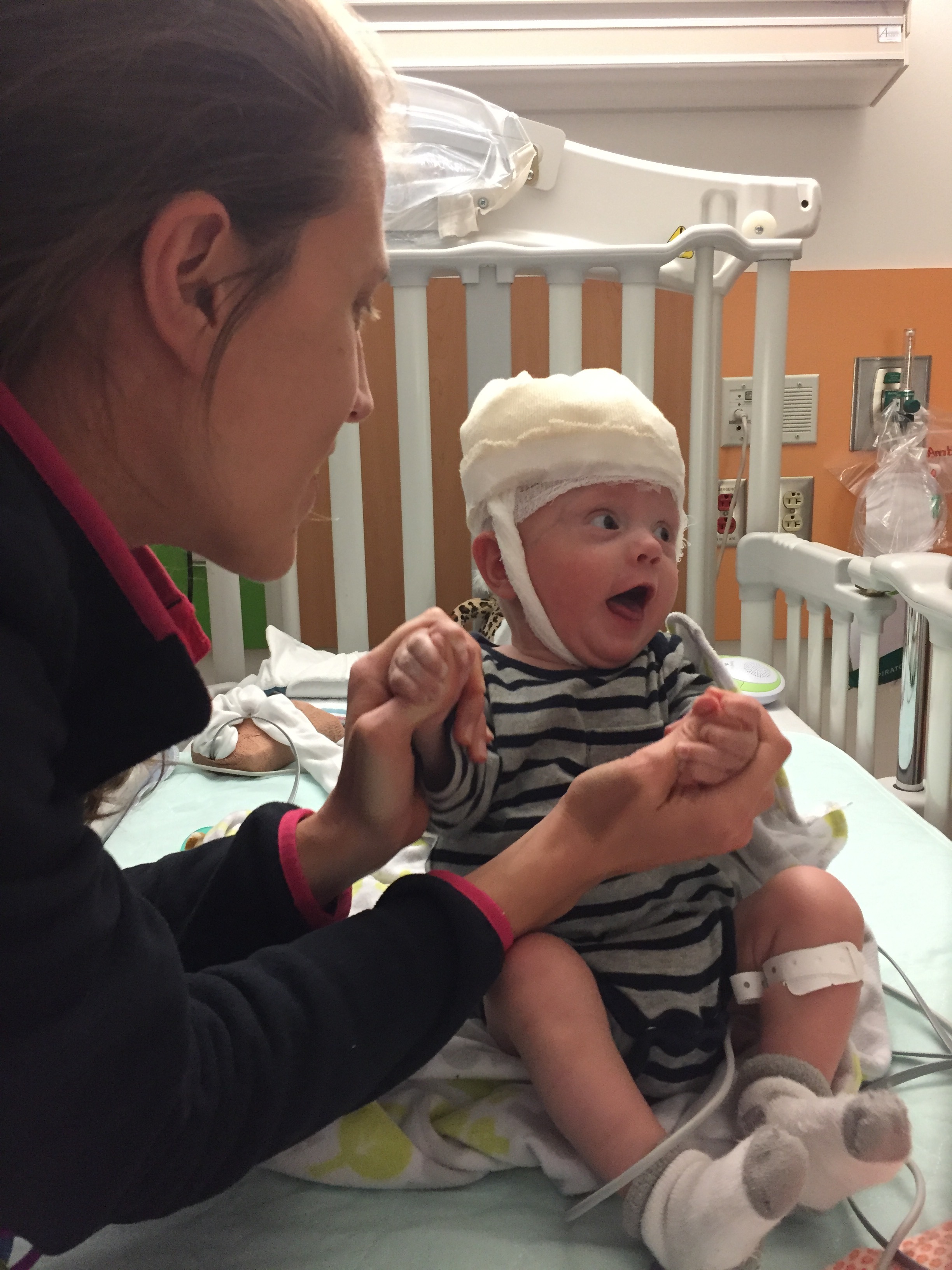November is Epilepsy Awareness Month. Never in a million years did I ever think this would be a part of my life. Even with all of Conner’s challenges in the NICU, not once did I worry about seizures, however knowing what I know now, I should have.
If you have followed Conner’s journey, you may know that he has Periventricular leukomalacia (PVL). PVL is a type of brain injury that affects premature infants. The condition involves the death of small areas of brain tissue around fluid-filled areas called ventricles. We knew Conner had PVL vey early on in his NICU stay. We also knew that if he had it, there was nothing that could be done to change it, fix it or improve it. It simply was what it was. In addition, I was worried about Conner surviving that day and couldn’t even begin to think about what this meant for his future. After all, we had to get through the NICU to even have to opportunity to worry about his PVL.
In January 2017, I noticed Conner’s eyes watering while I was changing his diaper.. It was unusual for him, but I brushed it off. A couple days later Conner had an episode that involved his eyes and mouth along with the eye watering I had seen just days before. I had no idea what it was. I had never seen a seizure before, but like many, I thought seizures were more violent, shaking of the body, eyes rolling in the back on your head, etc. I decided to video this episode and I am so thankful I did. Conner’s pediatrician got him in right away and she was concerned enough with what she saw on the video that she got Conner an EEG with his neurologist the next day. However, the same thing happened later that day and after some encouragement from a couple trusted people that know Conner well, I decided to call his pediatrician again. This time she agreed it would be a good idea to direct admit Conner to the hospital.
Other concerning signs:
Stopped smiling
Stopped talking/making sounds
Slept more - fell asleep at times he wasn’t normally sleeping
Overall was not himself
Conner was hooked up to a video EEG for about 18 hours. I was required to push a button anytime I thought he was having a seizure and I was instructed to write down the time and what it was that I saw him doing. Eventually I was told Conner’s EEG showed Hypsarrhythmia. So what is that? I had the same question (and the resident that relayed this information to me was unsure as she had never heard of it before). After I figured out how to spell it, I learned that Hypsarrhythmia is a very chaotic and disorganized brain electrical activity with no recognizable pattern, whereas a normal brain electrical activity shows clear separation between each signal and visible pattern. Hypsarrhythmia is synonymous with Infantile Spasm.
Typically Infantile Spasms look like a startle (easily confused with the startle reflex in infants) or head drops (which can be mistaken for lacking head control). Conner’s presented differently and were very subtle.
I had never heard of Infantile Spasms, but a quick google search made my heart drop directly into my stomach. I was speechless. Everything you read on the internet about infantile spasms is terrifying, hopeless and so incredibly hard to read as a parent of a child with that diagnosis. I didn’t know what was next for Conner, but I remember fearing for his future and ultimately his life.
Conner’s neurologist came to talk to me and we decided that the best option would be for Conner to get treatment at a different facility. We had already selected Cook Children’s for Conner’s next bowel surgery (which was put on hold to treat infantile spasms) and conveniently, Conner’s neuro had some connections to Cook. He was able to get Conner in the following week. In the mean time, I did as much research as I could, I called other facilities in hopes they could get Conner is sooner, etc. Looking back, I was so lost. I was starting to feel hopeless and so unprepared for the life I was living. Honestly, who can prepare for something like that anyway.
Once at Cook Children’s we met with the neurologist (who is easily one of our favorite specialists now) . He ran through treatment options and, of course, none of them came without major life changing side effects. if that wasn’t bad enough, the highest percentage of one of the medications stopping the infantile spasms was about 50%. I’ve never been a gambler, but I felt like I was about to gamble with my son’s life.
Eventually we landed on a high dose steroid called ACTH for Conner’s treatment. The plan was a two week course of ACTH injections followed by a 6-week wean with Prednisolone. At that time, ACTH had the highest chance of stopping the spasms (about 50%). It also came with high blood pressure as a side effect. This was a big concern because Conner already had high blood pressure (because he has one functioning kidney). He was on medication for it, but thankfully it was a low dose at the time, so we knew we had room to increase if his blood pressure became more of a concern. Conner’s neurologist actually suggested we try a different medication because of the high blood pressure concern. We felt ACTH was worth the risk and we knew Conner’s nephrologist was already on board with closely monitoring him through treatment. Listen to everything doctors have to say and then trust your gut. You know your child best.
I conveniently breezed by the fact that ACTH was an injection. Conner was inpatient for the first two injections. The nurse did the first one and showed me how to do it. Then the following day I received training and it was my turn to prove I was willing and able to give Conner this injection everyday for 2 weeks. I did it…I cried…Conner cried, but I did it! It got easier the next few days as I knew that what I was doing, while it hurt Conner in the moment, was his only hope for a better quality of life.
Another concerning thing about ACTH is the cost. I recently read an article from CNN that said ACTH costs $39,000 per vial…a 5 ML vial at that. Conner went through a little over two vials in two weeks. Thankfully our insurance was very helpful with covering the medication and getting it to us ASAP. Cook Children’s supplied us with enough medication to get by until our shipment arrived from insurance.
Side Effects:
Blood pressure is a real side effect. It happens and it can get scary if it is not very closely monitored. Conner’s nephrologist saw him up to 3 times a week depending on how he was doing.
The moon face…I knew this was coming, but it still surprised me. Conner’s face was HUGE. He gained about 2lbs on steroids and I swear 95% of it was in his face. His skin was stretched out, he looked incredibly uncomfortable and he seemed to have a little harder time breathing.
Feeding - this is something I was not prepared for. Conner’s appetite increased, but overnight it plummeted to refusing anything by mouth. I started to feed him with a 5ml syringe just to keep him hydrated. I have no idea how he stayed hydrated, but blood work showed he was.
If refusing to eat wasn't hard enough, what he did manage to take by mouth was thrown up. Talk about a stressful time when he had to take seizure medication and a steroid by mouth. He did not have a g-tube at this point.
Conner’s outcome:
About a week into Conner’s ACTH injections, his seizures stopped. His smile began to return, he laughed and was more himself. Of course, if you’ve had experience with seizures, you know that other things like anxiety, fear they’d return, constantly observing your child, etc. did not go away. In fact, I think all of those things got worse for months. It wasn’t until recently did I feel like I could somewhat relax a bit and not watch Conner’s every move. Conner is 22 months seizure free and Conner’s neurologist reminds us that if he is progressing then we should take that as a good sign.
Today, Conner is doing really well. His EEG will always be “abnormal” because of his type of brain injury (PVL). Conner continues to take Keppra and we’ve recently go to an EEG once a year instead of every 6 months. As of now, Conner’s next EEG is October of 2019 and we will adjust his keppra as needed or with any luck, he will grow out of his keppra dose and not require it any longer (wishful thinking).
Worries for the future:
Infantile Spasms only effect infants (as you might have known from the name). However, infantile Spasms can progress into different types of seizures. I am afraid that there will never be a time in Conner’s life that seizures won’t be a concern. However, the longer he goes without a seizure, the better for his over all development and future.
Things to know:
Infantile Spasms is considered an EMERGENCY. If you suspect your child is having Infantile Spasms (or any seizure), get them in as soon as possible.
This is the time to advocate for your child. Don’t accept wait and see or “come back if it happens again.” Sometimes an EEG can tell a lot.
Take video - if you suspect seizures activity, take video, if possible. This will be so helpful to show doctors.
Do you research on medications and go in with all your questions
Oddly enough I found the most support for Infantile Spasms from Facebook groups. Here are the ones that I found most helpful.









